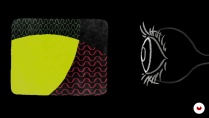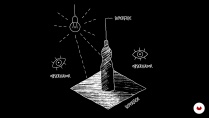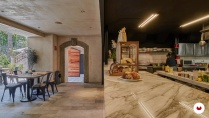Lighting Design for Interior Spaces
A course by Mónica Vega , Designer

Learn how to trigger emotions and communicate ideas through the conceptualization of light
Is it possible to generate emotions and communicate ideas with light alone? The answer from Mónica Vega, architectural lighting designer and founder of LumLum studio, is a resounding yes. Together with her, make light your main working tool and be able to create a memorable language.
In this course, learn to use light as a design medium with basic techniques to illuminate interior spaces. When you finish, you will know how to conceptualize and design light atmospheres to generate user experiences, as well as the best way to present your projects to your team or clients.
What will you learn in this online course?
14 lessons & 25 downloads
- 97% positive reviews (681)
- 26,932 students
- 14 lessons (2h 25m)
- 25 additional resources (11 files)
- Online and at your own pace
- Available on the app
- Audio: Spanish, English, French, Italian, Portuguese
- Spanish · English · Portuguese · German · French · Italian · Polish · Dutch
- Level: Beginner
- Unlimited access forever
What is this course's project?
Develop a lighting project for an interior space using LumLum’s 3-stage method: concept, technique, and documentation.

Projects by course students
Who is this online course for?
Architects, interior designers, design lovers, and anyone curious about light who wants to learn how to use it as a building material.
Requirements and materials
To take this course, you will need to have basic knowledge of architectural design.
As for materials, you will need a sketchbook, black paper, and blue, yellow, white, and orange pencils.

Reviews

Mónica Vega
A course by Mónica Vega
After graduating in architecture, Mónica Vega founded LumLum in 2014, her own studio in Mexico City devoted to architectural lighting design for interior spaces, primarily restaurants, offices, and stores.
Through extensive research and documentation, LumLum seeks to convey emotion using light as a medium. Most of her projects are located in the capital, but she also works all over the country, providing tailored solutions to each client and building.
Content
-
U1
Introduction
-
Presentation
-
Influences
-
What will we do on the course?
-
-
U2
The light
-
What is light
-
The subject, observer
-
Light, materials, objects
-
-
U3
Conceptualization
-
The concept
-
Composition
-
Layers and hierarchies
-
-
U4
Technique and documentation
-
Light sources
-
How to choose a light source? 1
-
How to choose a light source? 2
-
Representation of light sources
-
Drawing the light
-
-
FP
Final project
-
Lighting design for interior spaces
-
What to expect from a Domestika course
-
Learn at your own pace
Enjoy learning from home without a set schedule and with an easy-to-follow method. You set your own pace.
-
Learn from the best professionals
Learn valuable methods and techniques explained by top experts in the creative sector.
-
Meet expert teachers
Each expert teaches what they do best, with clear guidelines, true passion, and professional insight in every lesson.
-
Certificates
PlusIf you're a Plus member, get a custom certificate signed by your teacher for every course. Share it on your portfolio, social media, or wherever you like.
-
Get front-row seats
Videos of the highest quality, so you don't miss a single detail. With unlimited access, you can watch them as many times as you need to perfect your technique.
-
Share knowledge and ideas
Ask questions, request feedback, or offer solutions. Share your learning experience with other students in the community who are as passionate about creativity as you are.
-
Connect with a global creative community
The community is home to millions of people from around the world who are curious and passionate about exploring and expressing their creativity.
-
Watch professionally produced courses
Domestika curates its teacher roster and produces every course in-house to ensure a high-quality online learning experience.
FAQs
Domestika courses are online classes that allow you to learn new skills and create incredible projects. All our courses include the opportunity to share your work with other students and/or teachers, creating an active learning community. We offer different formats:
Original Courses: Complete classes that combine videos, texts, and educational materials to complete a specific project from start to finish.
Basics Courses: Specialized training where you master specific software tools step by step.
Specialization Courses: Learning paths with various expert teachers on the same topic, perfect for becoming a specialist by learning from different approaches.
Guided Courses: Practical experiences ideal for directly acquiring specific skills.
Intensive Courses (Deep Dives): New creative processes based on artificial intelligence tools in an accessible format for in-depth and dynamic understanding.
All courses are 100% online, so once they're published, courses start and finish whenever you want. You set the pace of the class. You can go back to review what interests you most and skip what you already know, ask questions, answer questions, share your projects, and more.
The courses are divided into different units. Each one includes lessons, informational text, tasks, and practice exercises to help you carry out your project step by step, with additional complementary resources and downloads. You'll also have access to an exclusive forum where you can interact with the teacher and with other students, as well as share your work and your course project, creating a community around the course.
You can redeem the course you received by accessing the redeeming page and entering your gift code.












ivetteprada
Plusvery interesting
naylanakadi
PlusMuy interesante!
luis_sota2006
Muy bueno
renzogra96
👍🏻
camiloariasxv
Este curso no tiene desperdicio, magistral